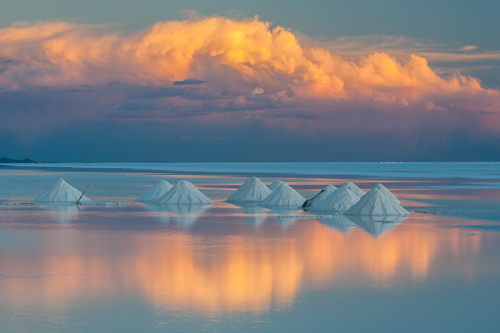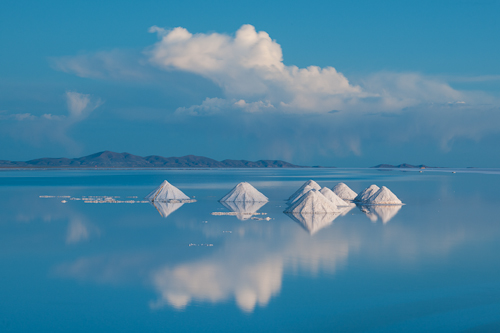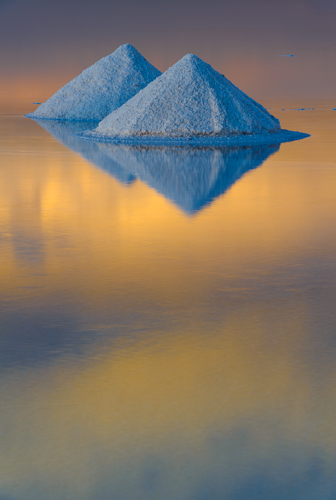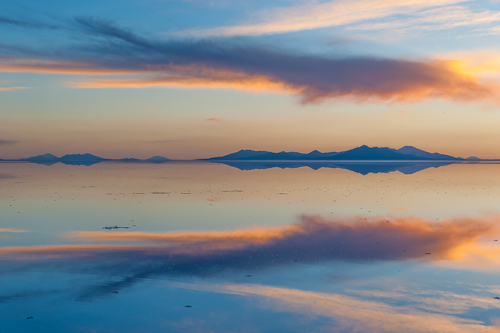Earlier this year I had the opportunity to photograph a location I had always wanted to visit: the Salar de Uyuni in southwest Bolivia. This is the largest salt flat on earth, covering over 4,000 square miles (over 10,000 square kilometers). The salt is mined by hand, shoveled into pyramids to drain, before being shoveled once again by hand onto trucks. “Flat” is an apt description of the Salar, as the surface varies by less than one meter over the entire expanse. I timed my visit to be just after the rains, when the flats are covered by a few inches of water, as I wanted reflections in this giant mirror.





4 Comments
I love the clarity, color and most of all the composition of these photographs. You have such amazing talent at arranging your landscape subjects.
Beautifully done!
Superb images as always. Salar is very high on our list of places to visit and your images just make us want to go there ASAP. Many thanks. Ash & Ger
All are lovely. My favorite in the series is the first one…love those clouds. Beautiful work!
Hi John,
Beautiful images. I was not aware of your blog. I look forward to more travel posts.
I have read almost every book that you have written. I hope someday you update your ‘Nature Photography’ and make it more ‘digital photography’ friendly, where-ever possible. While most of the science and art of photography obviously hasn’t changed, I believe sections like gear, esp with with respect to performance of today’s ultra-wide zoom lenses, image stabilization, and ISO performances of today’s cameras have pushed the limits of taking what would have been an impossible shot during the film days. With techniques like stitching images shot from tilt shift lenses, one go beyond 35mm and approach medium, or even large format. I remember reading an interview by Jack Dykinga on that subject. I would love to know your thoughts as an ‘overview’ on the changed times.
thanks,
hrishi